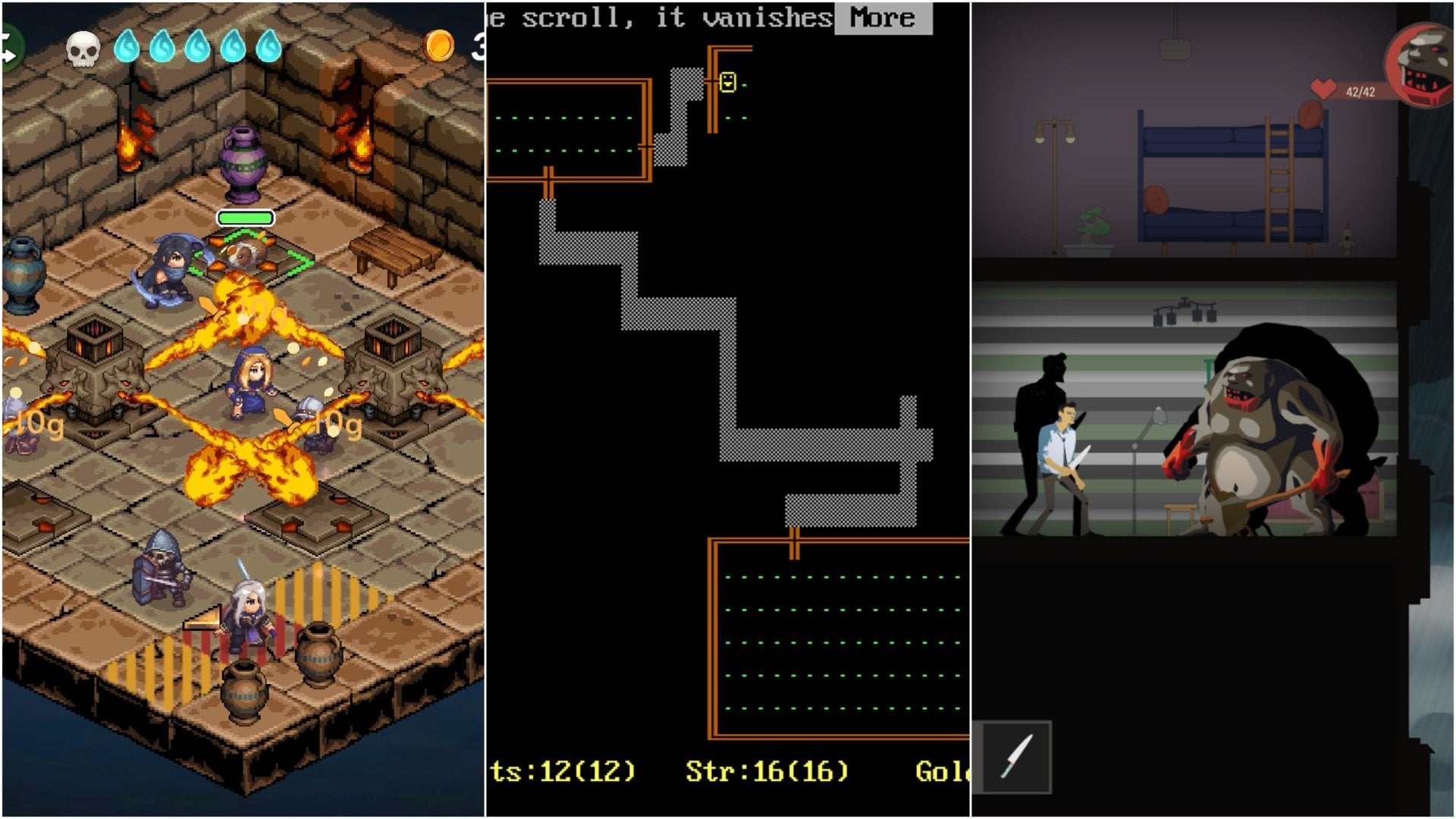![]() Key Takeaway
Key Takeaway
Here are the features that make a game a Roguelike:
- Randomly generated elements need to be present (enemies, levels, items, etc.)
- The core goal of the game must involve exploring one or more areas
- The player character and enemies move along a grid
- There must be turn-based combat
- No backtracking allowed for most (if not all) of the game
- The difficulty must increase as players get further into the game
- Winning the game must either involve reaching the furthest point in an area, obtaining an important key item, or both
- If the player dies, they must start over from the beginning
- RPG elements must be involved
Roguelike games are a sub-genre of RPG that features perma-death, turn-based combat, and many procedurally generated elements. Despite the heated online debate about what does and doesn’t count as a Roguelike, there are quite a few gameplay factors that can help you determine the truth for yourself.
Table Of Contents
What Is a Roguelike Game?
To be blunt: a Roguelike game must—by definition—resemble the game Rogue (1980). By that, we don’t mean in the physical sense; we mean in terms of concept and gameplay. Before we get into how a game can literally become Rogue-like, we’ll break down the most important features in list form. Most of these features need to be present in true Roguelikes.
The Features That Make a Game a Roguelike
- Randomly generated elements need to be present (enemies, levels, items, etc.)
- The core goal of the game must involve exploring one or more areas
- The player character and enemies move along a grid
- There must be turn-based combat
- No backtracking allowed for most (if not all) of the game
- The difficulty must increase as players get further into the game
- Winning the game must either involve reaching the furthest point in an area, obtaining an important key item, or both
- If the player dies, they must start over from the beginning
- RPG elements must be involved, such as:
- Gaining experience
- Leveling up
- Collecting items (including weapons, currency, and more)
- Including player statistics (health, strength, armor, and additional parameters)
What You Need to Know About Rogue (1980)
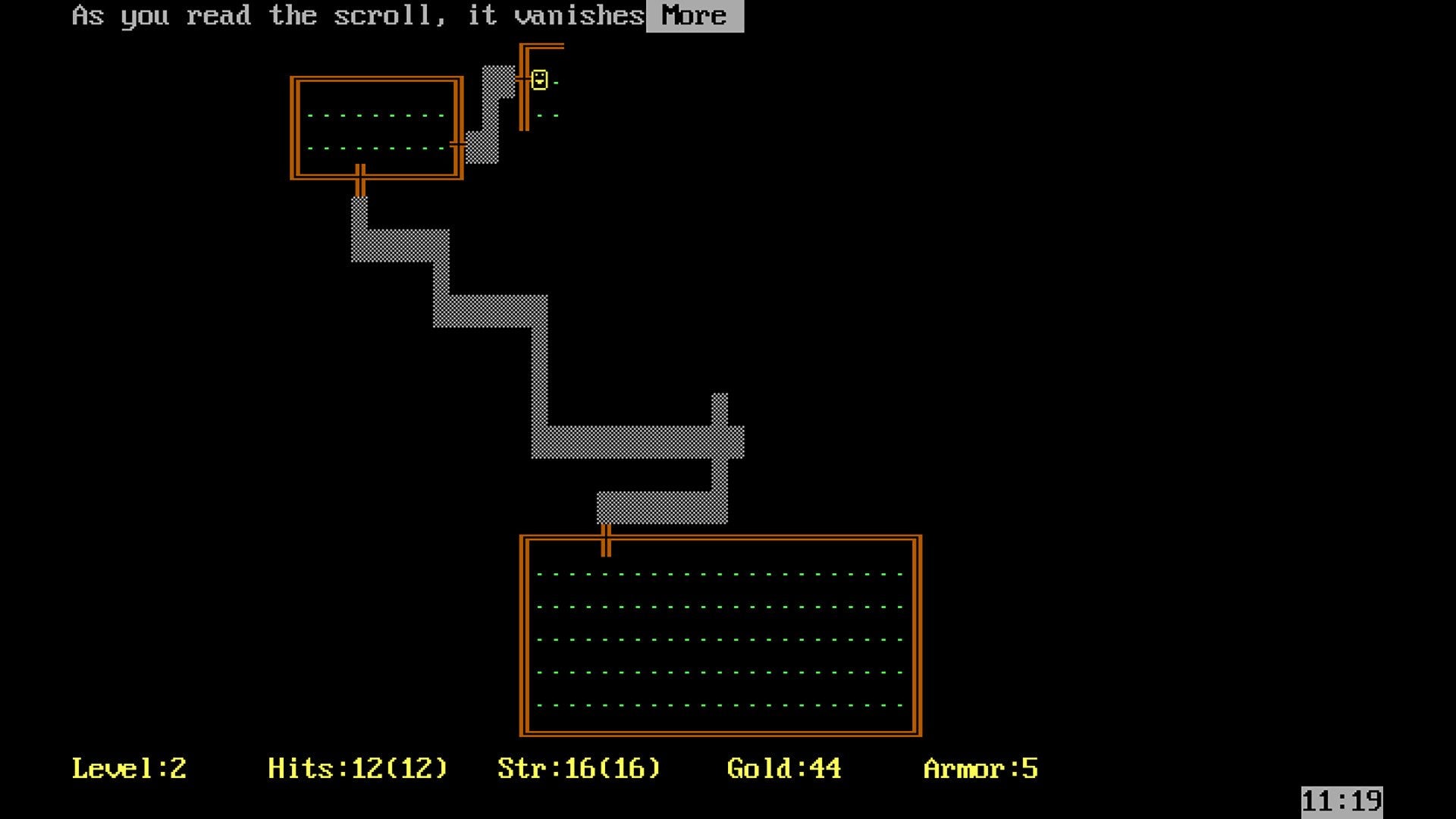
The first thing you’ll notice about Rogue is its graphics…there aren’t any besides basic characters. This adventure game from 1980 solely uses ASCII—a character encoding system for computers—for its visuals. As such, you’ll only see letters, numbers, and punctuation on screen. However, that’s arguably the least important part of Rogue.
Your in-game goal as the player is to dive into a dungeon to retrieve the legendary Amulet of Yendor from the deepest level. You begin at the top floor and must work your way downwards by fighting through increasingly difficult waves of enemies in turn-based combat. In true RPG fashion, your character has stats, such as Hits (hit points or health), Str (physical strength), and more.
Levels are random; procedurally generated—as are the enemies and their locations. You can only travel down: deeper and deeper until you find the Amulet of Yendor. Afterward, you need to return to the surface to beat the game. If you die, you need to restart the entire game.
Sound familiar? It should! Rogue pioneered a lot of these elements, which paved the way for future games by creating a whole new sub-genre. For a frame of reference, think of how the Metroidvania and Soulslike sub-genres were created.
Roguelike vs Roguelite—What’s the Difference?
Roguelites are games that have strayed from the Roguelike sub-genre by ditching some of the features that make them similar to Rogue. For example, some Roguelites have dungeon-delving, character stats, and procedural generation—but have action-based combat instead of the turn-based variety. Others may have the four aforementioned features and leave out grid-based movement and most traditional RPG elements. Think of Roguelites and a sub-genre within Roguelikes (a sub-sub-genre).
We’ll illustrate the difference by looking at a couple of video games. Let’s examine SKYHILL and Dead Cells.
Example of a Roguelike
First up is SKYHILL: a true Roguelike.
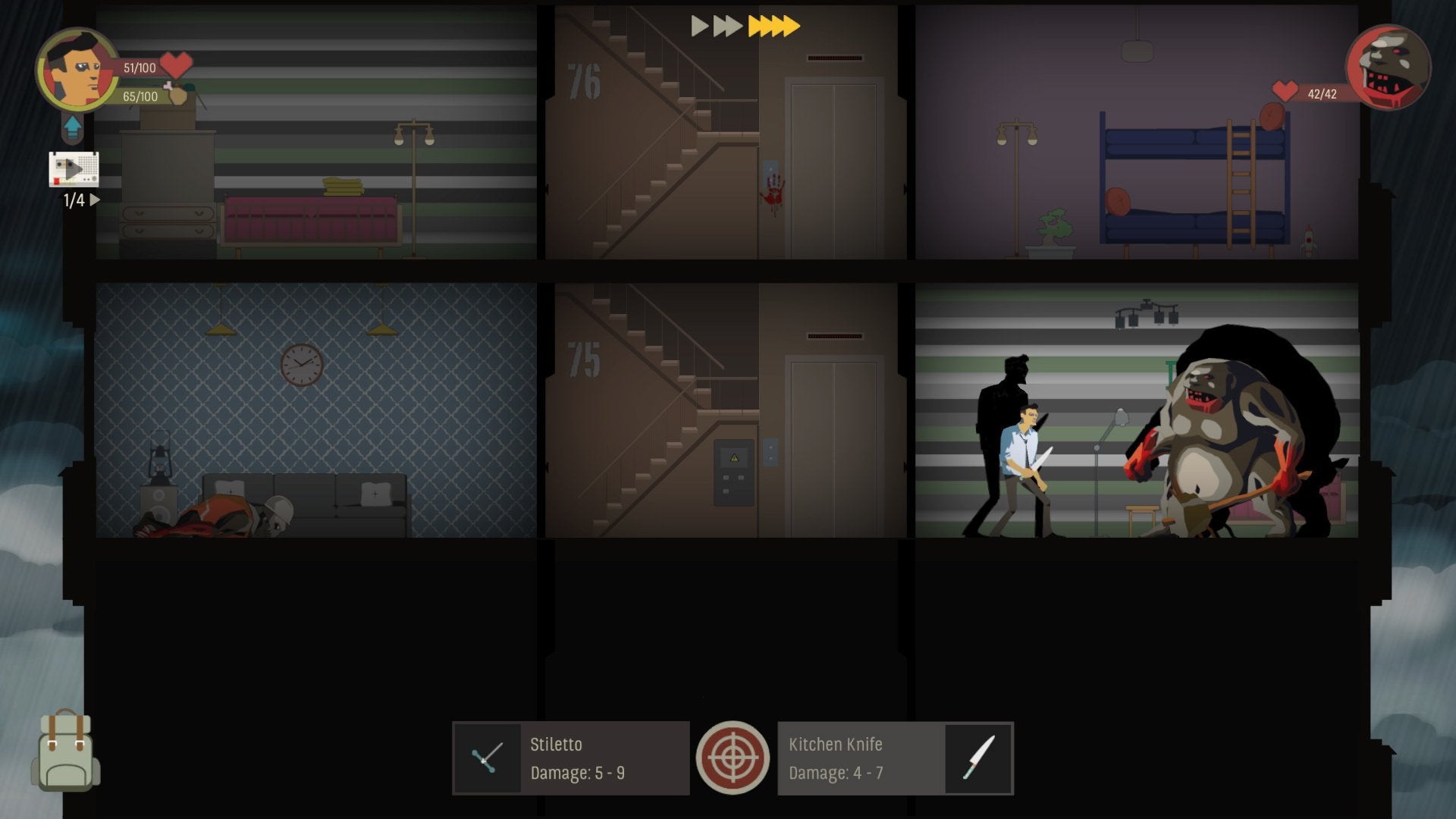
SKYHILL has the following features that are also in Rogue:
- Randomly generated elements
- Exploration of a dungeon-like location
- The player character and enemies move along a pseudo-grid (in this case, rooms)
- The combat is turn-based
- The difficulty increases as players get further into the game
- Beating the game requires reaching the bottom floor of the apartment building
- If the player dies, they must start over from the beginning
- Many RPG elements are involved
- Gaining experience
- Leveling up
- Collecting items (weapons, parts, food, and more)
- Including player statistics (Health, Hunger, Strength, Speed, and additional parameters)
Out of the true Roguelike features, SKYHILL is only missing “no backtracking,” as the player can return to their penthouse suite on the top floor to heal and craft items.
In addition to the above elements, SKYHILL has lots of differences that set it apart from Rogue. With that said, those further differences are in addition to the Roguelike features; not in place of them.
Example of a Roguelite
Now, let’s delve into why Dead Cells is a Roguelite instead of a Roguelike.
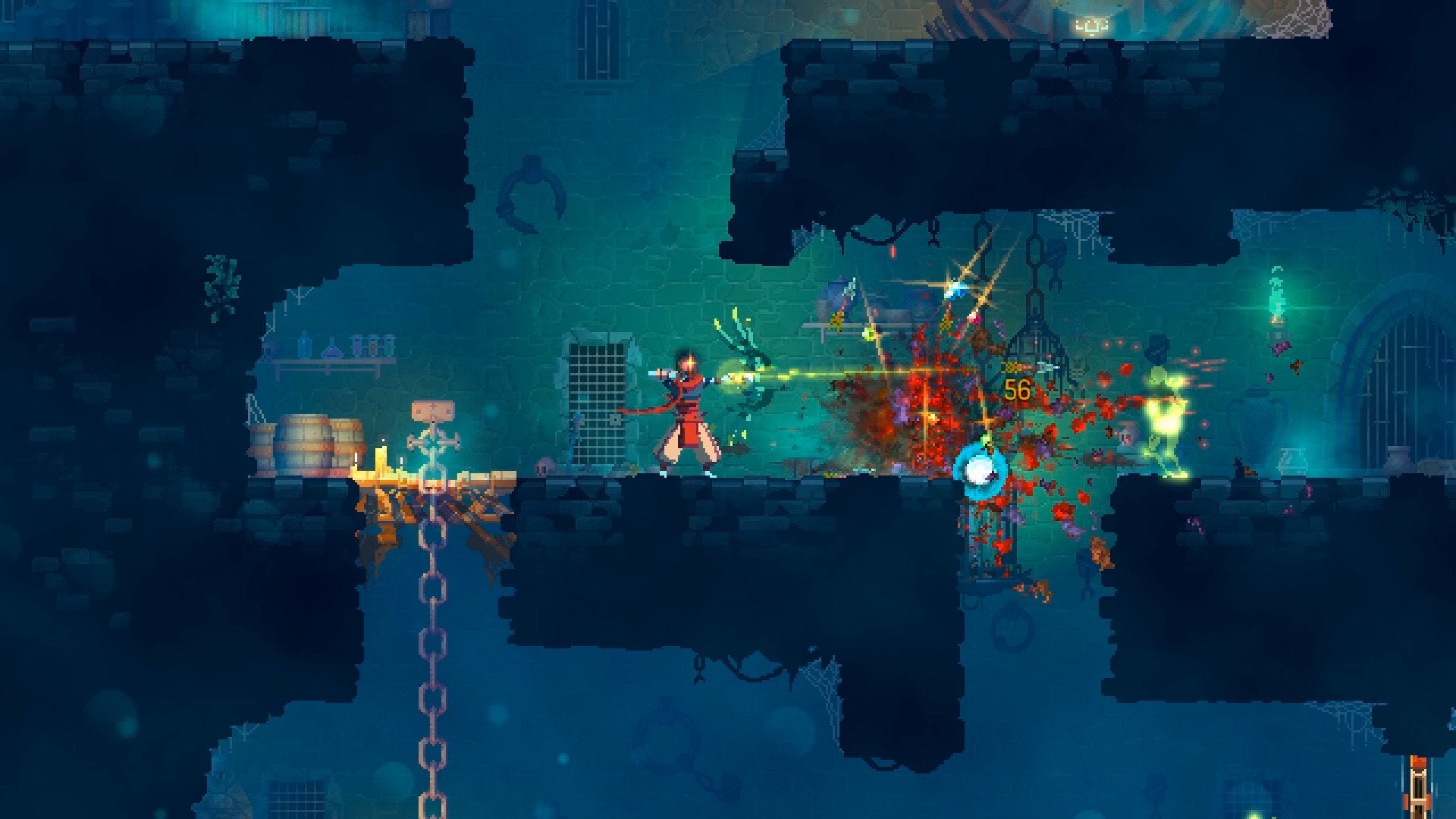
Dead Cells has the following features that are also in Rogue:
- Randomly generated elements
- Exploration of dungeon-like locations
- The difficulty increases as players get further into the game
- No backtracking allowed
- Beating the game requires reaching the center of the island (the furthest point from the starting location)
- If the player dies, they must start over from the beginning
- Some RPG elements are involved—but not many
- Collecting items (weapons, cells, and more)
- Including player statistics (Health, Brutal, Tactics, Survival, and additional parameters)
Notably, Dead Cells has action-based combat instead of the turn-based kind. This is one of the biggest components of Rogue, so the difference here is particularly important. Turn-based games and action-based ones feel very different, so they should not be in the same sub-genre in most cases.
On top of that, there is no grid-based movement in Dead Cells either. What’s more, most traditional RPG elements are not present. While Dead Cells still has a lot in common with Rogue, it’s moved away from its ancestor’s nature enough that it cannot be accurately categorized in the same sub-genre.
Organization, Not Gatekeeping
A lot of tags get slapped around haphazardly on video games. We get that it’s a way to market a title by telling potential players that a specific game is like another that was successful. However, there are limits to how far players can logically stretch a sub-genre tag.
Yes, Papa’s Freezeria can get hectic to the point that it’ll make your brain burst—but that does not mean you can tag it as a “Psychological Horror” game!
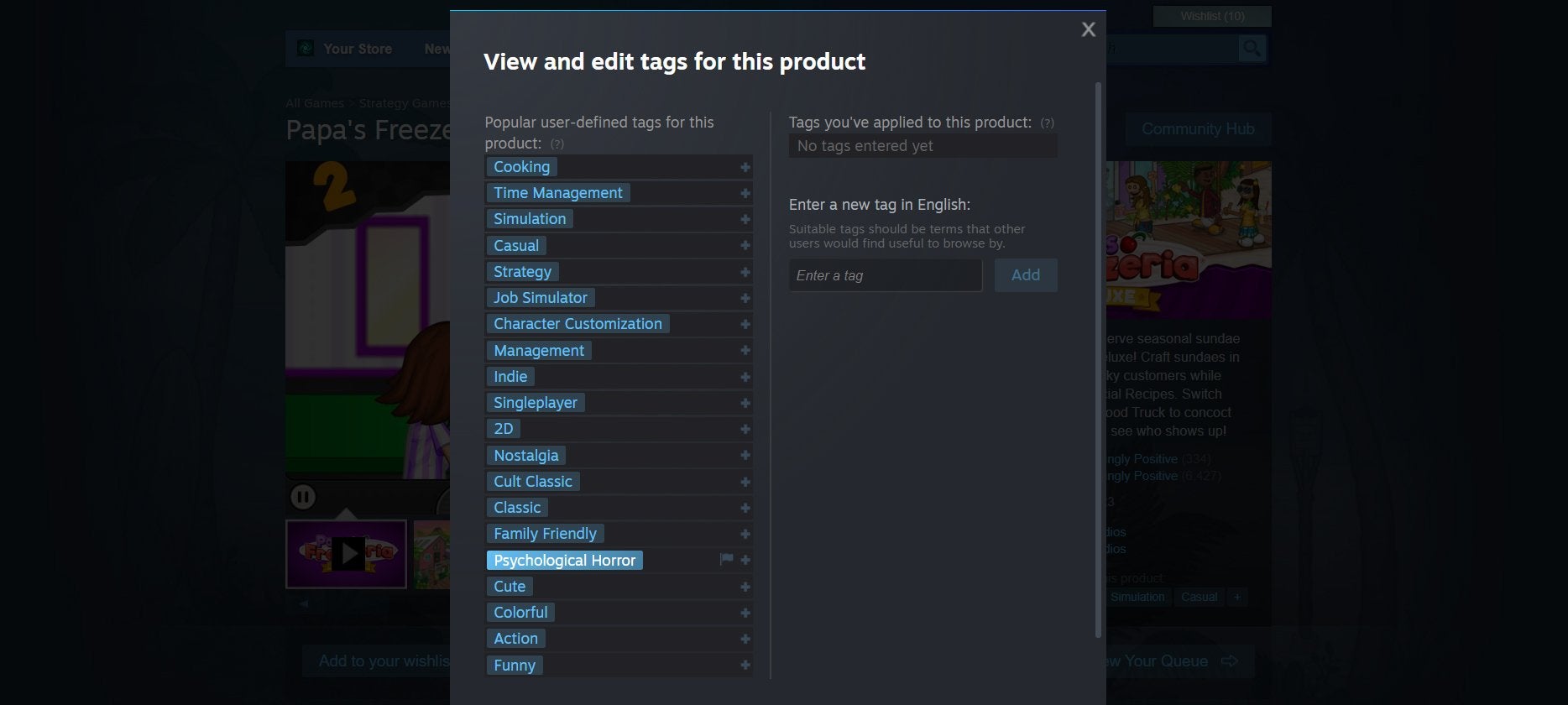
In the end, it comes down to this old consumer warning: try before you buy. Explore a game’s demo or watch the trailer to get a sense of whether or not it’s for you.
Defining a player-created term is always tricky—but we hope our explanation helped you understand Roguelike games! Regardless of how dissimilar a title is to the original Rogue, don’t let that stop you from playing a game that looks fun. Did you see an interesting platformer tagged as a Roguelike on Steam for 50% off? Buy it! Don’t worry about whether or not it’s actually a Roguelike—what matters more is whether or not you have a good time playing it.


